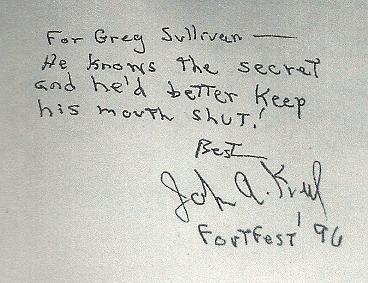
Greg Sullivan passed this along — from a copy of Operation Trojan Horse.

Greg Sullivan passed this along — from a copy of Operation Trojan Horse.
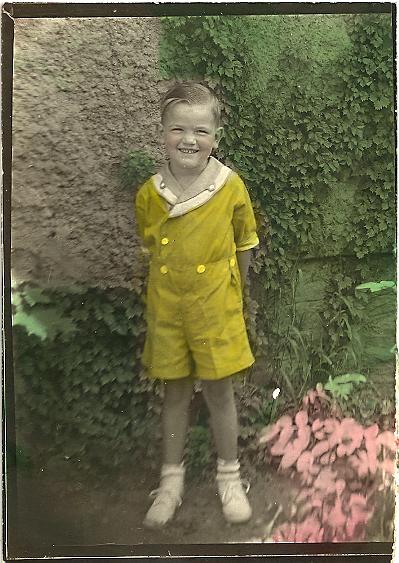
Today is John Keel’s birthday. He was five years old when this photo was taken; if he were alive today, he’d be 81. We miss him.
To mark the occasion, Anthony Matt and I (Doug Skinner) will chat about his life and work on “In Other News,” hosted by Geoff Brady on WBAI, on Monday, March 28, at 10 pm. WBAI is at 99.5 FM in NYC, or at wbai.org.
My last birthday present to John was a deck of World War 2 airplane spotter cards. “I can still identify all these planes,” he said.
ADDENDUM: Our appearance on “In Other News” is archived here.
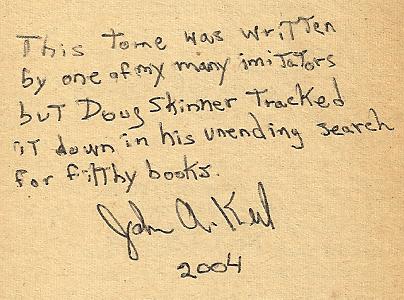
And here’s the inscription for the second “Harry Gibbs” novel, Town Tease.
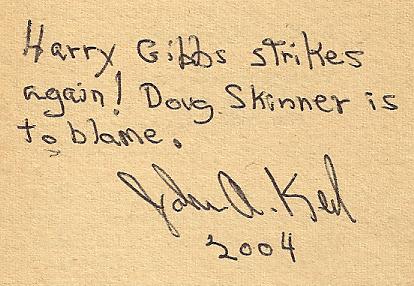
John was surprised that I’d found a copy of his “Harry Gibbs” novel, Three Women. Here’s what he wrote in it.
The blog of the British journal Magonia has posted an interesting article it first ran in 2002, on Keel’s reception from the various factions of ufology. It can be found here. And thanks to Greg Sullivan for pointing it out.
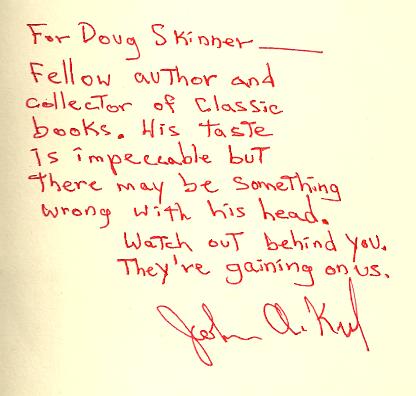
John Keel’s book inscriptions were prized by his fans. I’ll scan some for your enjoyment; here’s how he signed my copy of Jadoo.

A memento of John’s military career.
I’ve posted Ed Lord and John Keel’s home movie, “A Day at the Fair,” on YouTube. John plays a loutish tourist who waits in line all day at the 1964 World’s Fair. For more on his films with Ed Lord, see this earlier post. And for the movie, click here. Thanks again to Anthony Matt and Angela Alverson for technical help.
John wrote the following position statement for isotretinoin purchase without prescription The Encyclopedia of UFOs, edited by Ronald D. Story and J. Richard Greenwell (Doubleday, 1980). It’s a concise summation of his conclusions at the time.

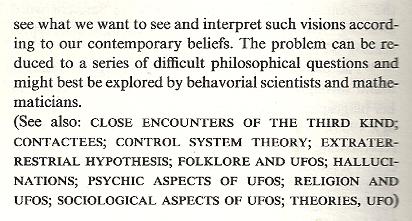
Carl Allen — or, as he preferred to call himself, Carlos Allende — caused a great deal of confusion in the ufological community in the ’60s.
If you’re unfamiliar with him, I can direct you to Robert A. Goerman’s dossier. But, in brief, Allen wrote some letters to the UFO writer Morris K. Jessup, which, disseminated and elaborated, became the story of the “Philadelphia Experiment.” He also annotated a copy of Jessup’s book, The Case for the UFO, and sent it to Admiral Furth, Chief of the Office of Naval Research in Washington, D.C. The Navy transcribed it, and published it in a small edition with Allen’s commentary in red: thereby puzzling and exciting saucer buffs everywhere. The “Varo Edition” (so called after the printer) became a legend, more talked about than read, until Gray Barker published a facsimile in 1973.
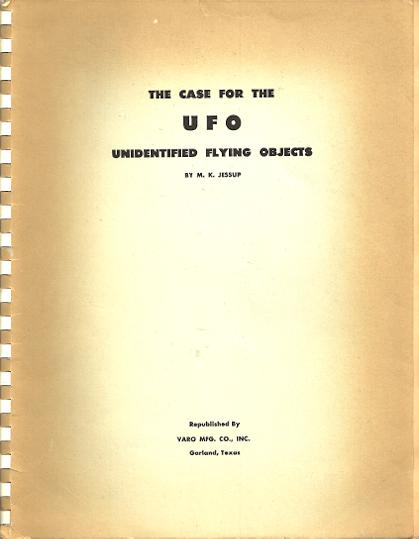
Jessup eventually killed himself; and speculation about his suicide, the military, and Allende generated many conspiracy theories.
According to John, the original Allende-enhanced paperback ended up with Ivan Sanderson; and John recalled sitting up one night to study it.
Allen also wrote John a few times. He favored long, abusive, and incoherent tirades (“dammit you make me darn good and mad with your silly-damm supercilliously snobbish all-knowing superiority”). Here’s the final page of one:
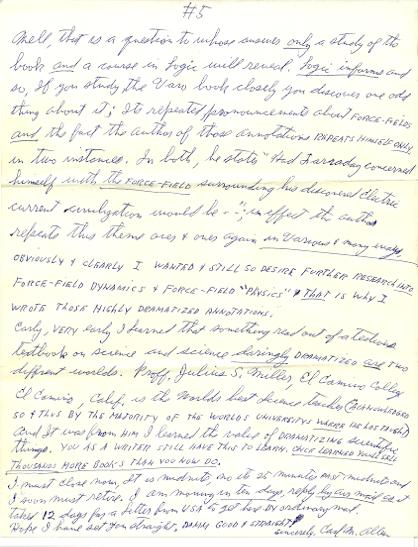
Allen was, at last, no more than a troubled drifter. Goerman’s interview with his father (Fate, 10/81) is a sad one. But Carlos caused quite a bit of excitement in his day.